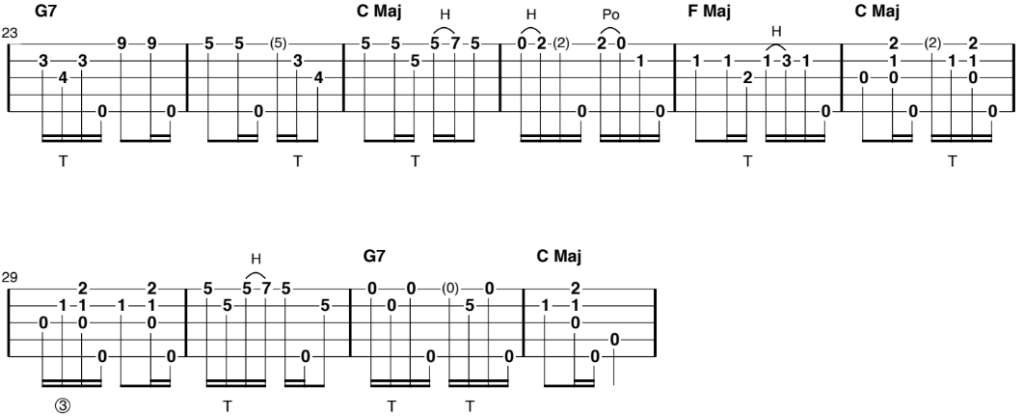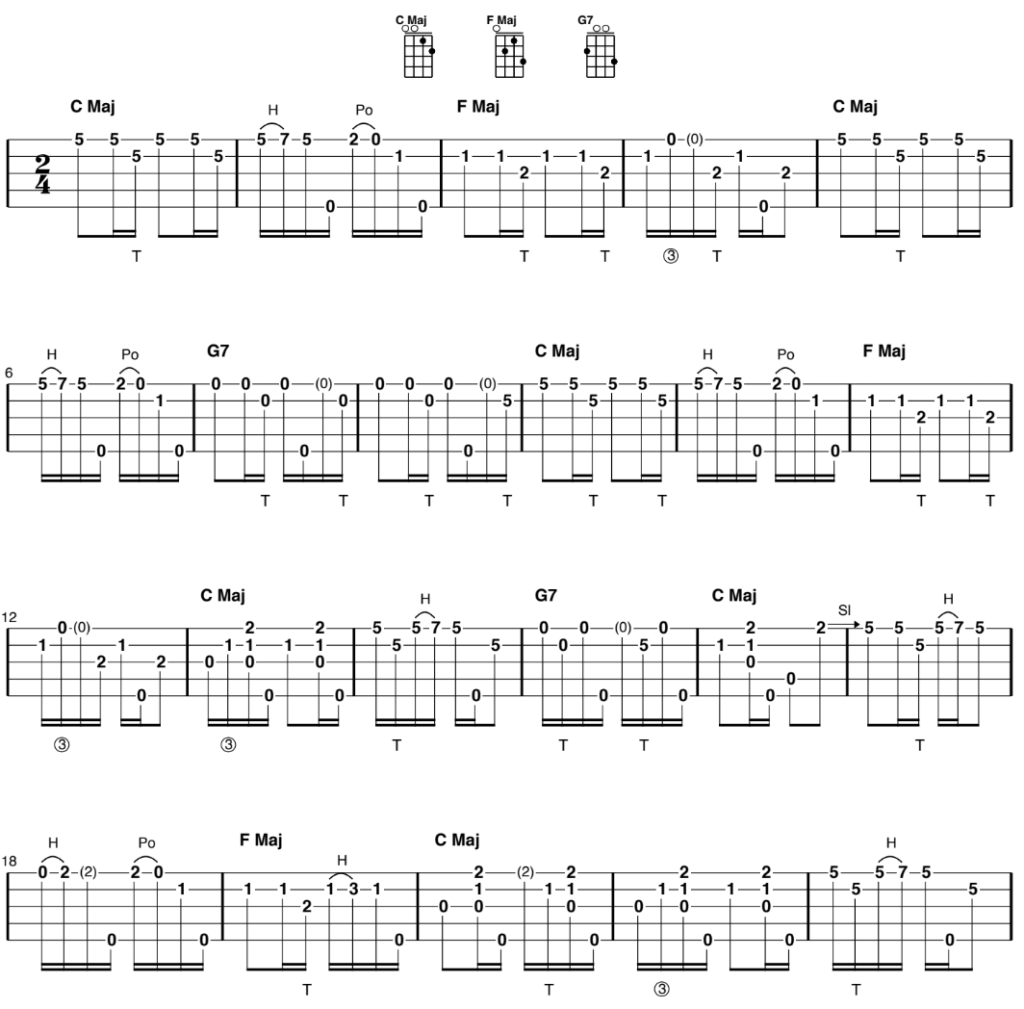Click on the button below to get the PDF download for this tab delivered to you, and get 2 new tunes and tabs sent to you every week!
This week’s tune was introduced to me by my friend and former Sedentary Rambler bandmate, Jim Sims (thanks Jim!). I’d initially worked it out as a fingerpicked arrangement, which was how I used to play it when we performed.
Why was that? Because, as you may be able to hear, rhythmically it’s a departure from what you might consider to be the prototypical clawhammer sound.
But recently I decided to try working out a down picked version (the one you hear in the video), and quite liked it.
Yet, if you listen, or especially if you play it, you’ll note that it doesn’t sound or play quite like your typical clawhammer banjo tune.
Specifically, you may note an extra little pause after some of the downbeat strikes – one that makes it “swing” a little, and not a maneuver commonly employed by clawhammerists these days.
You may also note there’s a relative lack of fifth string droning. But the fifth string is used to play some of the melody notes, providing an efficient fingering solution in those instances.
Incidentally, both of these maneuvers would’ve been familiar to downpicking banjoists in the 19th century, as they were routine elements of minstrel banjo.
So what style is it? Well, it isn’t Round Peak. Is it “melodic” banjo? Is it a “minstrel” banjo tune?
Who knows? Who cares!
It doesn’t fit neatly into any rigid stylistic classification system, which is precisely the point (though it would serve as a good entry tune for those wanting to dig into the world of minstrel banjo – it’s even in “minstrel” tuning!).
Turns out the same is true of the fingerstyle version as well, which you can hear below:
Neither the down or up-picked versions here fit neatly into a single “style” description.
And that’s because both of these arrangements were created by starting with the sound, or the end result I wanted to achieve, and then working backwards to figure out how to use the techniques of either clawhammer or fingerstyle banjo to get that sound.
In either case, had I constrained myself to a particular “style” of picking from the start, I wouldn’t have been able to achieve the result I wanted. In fact, I might’ve never tried to play this tune in the first place.
This is another example of how these boundaries that exist in our imagination (i.e. banjo “styles”) can impose unnecessary limits if they make their way into the learning process, and another great illustration of why it’s so important not to conflate the two, not to confuse technique – the motor and cognitive skills needed for banjo playing – with the style in which a particular tune is played (a reflection of a consistent way in which the techniques are assembled to achieve a particular aesthetic).
Start with the sound, the end in mind, then work out the details. And let others worry about how to label it!
(RELATED: If you want to learn more about the hazards of confusing style and technique, click here to read “Banjo Essentials: How To Pick the Banjo in any Style“ at fingerstylebanjo.com)
(NOTE: For those considering acquiring a Brainjo banjo, the banjo played in this video is a “Hobart” model. Click here if you’d like to learn more, or claim one in the next batch.)
East Tennesse Blues
gCGBD tuning, Brainjo level 3-4

Notes on the Tab
Notes in parentheses are “skip” notes. To learn more about these, check out my video lesson on the subject.
For more on reading tabs in general, check out this complete guide to reading banjo tabs.
[RELATED: Level 2 arrangements and video demos for the Tune (and Song!) of the Week tunes are now available as part of the Breakthrough Banjo course. Learn more about it here.
Click here for a current list of all the clawhammer songs and tunes currently available inside of The Vault
View the Brainjo Course Catalog

